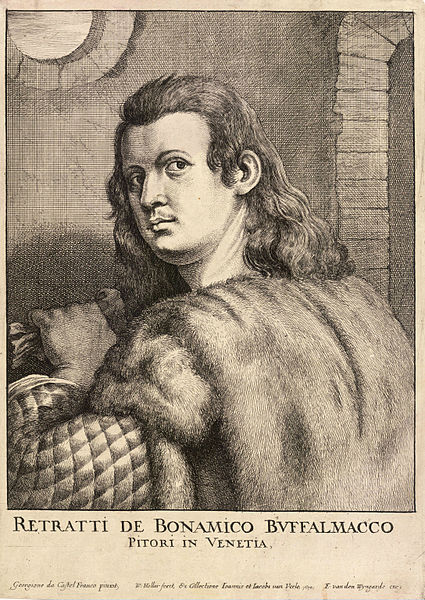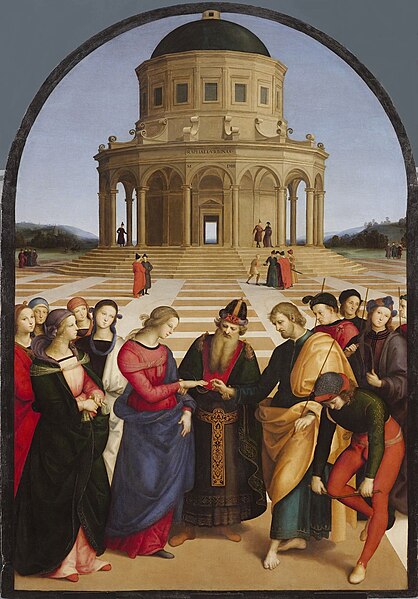Buonamico di Martino, otherwise known as Buonamico Buffalmacco, was an Italian Renaissance painter who worked in Florence, Bologna, and Pisa. Although none of his known work has survived, he is widely assumed to be the painter of a most influential fresco cycle preserved in the Campo Santo of Pisa, featuring The Three Dead and the Three Living, the Triumph of Death, the Last Judgement, the Hell, and the Thebais.
17th-century engraving of Buffalmacco by Wenceslaus Hollar
From left to right: L'incontro dei tre vivi e dei tre morti ("The Three Dead and the Three Living") and Trionfo della Morte ("Triumph of Death"). The latter fresco was painted between c. 1330s–1350 (disputed); both are currently preserved in the Campo Santo of Pisa.
Detail of Trionfo della Morte ("Triumph of Death"): three stylish young aristocrats mounted on fine horses encounter three coffin-encased corpses in differing stages of decomposition.
Italian Renaissance painting
Italian Renaissance painting is the painting of the period beginning in the late 13th century and flourishing from the early 15th to late 16th centuries, occurring in the Italian Peninsula, which was at that time divided into many political states, some independent but others controlled by external powers. The painters of Renaissance Italy, although often attached to particular courts and with loyalties to particular towns, nonetheless wandered the length and breadth of Italy, often occupying a diplomatic status and disseminating artistic and philosophical ideas.
Raphael: The Betrothal of the Virgin (1504), Pinacoteca di Brea, Milan.
Sandro Botticelli: The Birth of Venus for the Medici (1484–1485), Uffizi, Florence
Domenico Ghirlandaio, The Birth of the Virgin Mary, shows the introduction of patron's families into religious cycles.
Paolo Uccello, The Battle of San Romano, demonstrates the preoccupation with the development of linear perspective, in a secular subject







